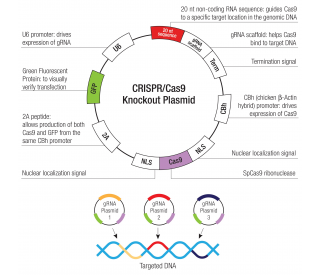Activity
Ubiquitin Agarose is ideal for the enrichment of known Ubiquitin-interacting proteins as well as the discovery of novel Ubiquitin-interacting proteins. We recommend equilibrating the resin by washing with 5-10 mL of your desired aqueous buffer.
Source
E. coli-derived
Accession #
U-400 |
| |
Formulation Supplied as a solution in 20% Ethanol. | ||
Shipping The product is shipped at ambient temperature. Upon receipt, store it immediately at the temperature recommended below. | ||
Stability & Storage: Do not freeze.
|
Background: Ubiquitin
Ubiquitin is a 76 amino acid (aa) protein that is ubiquitously expressed in all eukaryotic organisms. Ubiquitin is highly conserved with 96% aa sequence identity shared between human and yeast Ubiquitin, and 100% aa sequence identity shared between human and mouse Ubiquitin (1). In mammals, four Ubiquitin genes encode for two Ubiquitin-ribosomal fusion proteins and two poly-Ubiquitin proteins. Cleavage of the Ubiquitin precursors by deubiquitinating enzymes gives rise to identical Ubiquitin monomers each with a predicted molecular weight of 8.6 kDa. Conjugation of Ubiquitin to target proteins involves the formation of an isopeptide bond between the C-terminal glycine residue of Ubiquitin and a lysine residue in the target protein. This process of conjugation, referred to as ubiquitination or ubiquitylation, is a multi-step process that requires three enzymes: a Ubiquitin-activating (E1) enzyme, a Ubiquitin-conjugating (E2) enzyme, and a Ubiquitin ligase (E3). Ubiquitination is classically recognized as a mechanism to target proteins for degradation and as a result, Ubiquitin was originally named ATP-dependent Proteolysis Factor 1 (APF-1) (2,3). In addition to protein degradation, ubiquitination has been shown to mediate a variety of biological processes such as signal transduction, endocytosis, and post-endocytic sorting (4-7).
Ubiquitin is covalently coupled to agarose beads via primary amines allowing for a fully functional C-terminus. Useful for affinity binding of Ubiquitin-activating (E1) enzyme, Ubiquitin-conjugating (E2) enzymes, Ubiquitin ligases (E3s), Ubiquitin C-terminal hydrolases (UCHs), and other proteins/enzymes that have an affinity for Ubiquitin.
References:
Sharp, P.M. & W.-H. Li. (1987) Trends Ecol. Evol. 2:328.
Ciechanover, A. et al. (1980 ) Proc. Natl. Acad. Sci. USA 77:1365.
Hershko, A. et al. (1980) Proc. Natl. Acad. Sci. USA 77:1783.
Greene, W. et al. (2012) PLoS Pathog. 8:e1002703.
Tong, X. et al. (2012) J. Biol. Chem. 287:25280.
Wei, W. et al. (2004) Nature 428:194.
Wertz, I.E. et al. (2004) Nature 430:694.
Entrez Gene IDs:
7314 (Human); 298693 (Rat)
Alternate Names:
RPS27A; UBA52; UBB ubiquitin B; UBB; UBC; Ubiquitin










